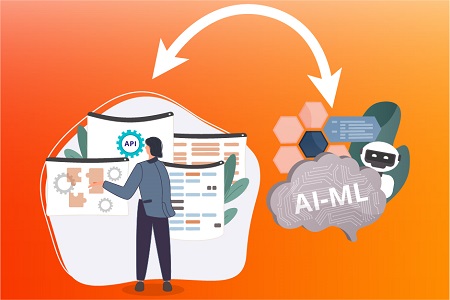In recent years, the field of artificial intelligence has witnessed remarkable advancements, particularly in the realm of Generative AI. This technology has shown great potential in various creative endeavors, including content generation, art, and even writing code.
As Generative AI continues to evolve, a pertinent question arises: Can it replace programmers and revolutionize the landscape of software development? In this blog, we will delve into the capabilities and limitations of Generative AI in code generation and explore the tools currently used for this purpose.
Understanding Generative AI and Code Generation
Generative AI refers to a subset of artificial intelligence techniques that involve creating new data based on patterns learned from existing data. It encompasses various models, such as Generative Adversarial Networks (GANs), Variational Autoencoders (VAEs), and Transformer-based architectures like GPT-3, that have demonstrated proficiency in generating content like images, music, and text.
Code generation using Generative AI involves training models on vast amounts of code repositories, APIs, and programming languages to learn syntax, semantics, and coding patterns. Once trained, these models can generate code snippets, functions, or even complete programs.
The Limitations of Generative AI in Code Generation
While Generative AI has shown impressive capabilities in code generation, it is essential to recognize its limitations:
Lack of Context: Generative AI models might generate code that lacks context or fails to understand the overall purpose of a project. The absence of context hinders the generation of coherent and well-structured code.
Limited Creativity: While AI models can generate code based on patterns found in the training data, they lack the ability to innovate or come up with original solutions. The creative and problem-solving aspects of programming remain distinctively human traits.
Quality and Reliability: AI-generated code may not always be efficient, optimized, or follow industry best practices. Human programmers’ expertise is necessary to ensure high-quality, maintainable, and secure code.
Handling Complexity: Generative AI struggles with complex programming tasks that require deep domain knowledge and intricate problem-solving. It may excel in generating repetitive or boilerplate code but falls short in addressing intricate logic and algorithmic challenges.
Tools for Code Generation using Generative AI
Despite the limitations, the progress in Generative AI has led to the development of various tools and frameworks for code generation:
OpenAI Codex (GPT-3): OpenAI’s Codex, built upon the GPT-3 language model, has garnered significant attention for its ability to generate code snippets in multiple programming languages based on natural language instructions. Developers can use Codex to draft code faster and access programming solutions with reduced effort.
GitHub Copilot: GitHub Copilot, a joint venture by GitHub and OpenAI, integrates with code editors like Visual Studio Code to provide real-time code suggestions and completions. Leveraging GPT-3’s capabilities, Copilot aims to enhance developer productivity by automating repetitive coding tasks.
DeepCode: DeepCode is an AI-powered static code analysis tool that scans codebases to identify potential bugs and vulnerabilities. It offers automated code suggestions and improvements to developers, speeding up the debugging process.
Kite: Kite is an AI-powered code completion tool that assists developers by suggesting code snippets and completions as they type. It is designed to improve code quality and reduce coding errors by providing relevant context-aware suggestions.
TabNine: TabNine is an AI-based autocompletion extension for various code editors. It employs GPT-3 and other machine learning models to provide intelligent code completions, predicting the next lines of code as developers type.
Conclusion
Generative AI has undoubtedly made significant strides in the field of code generation, presenting opportunities to enhance developer productivity and streamline certain coding tasks. While AI models like GPT-3, GitHub Copilot, and others show promise, they are far from replacing programmers altogether.
The collaborative partnership between Generative AI and human developers seems to be the most promising path forward. As the technology continues to evolve, developers will likely leverage Generative AI tools to automate repetitive tasks, generate boilerplate code, and facilitate the coding process.
However, the creative and critical thinking aspects of programming will remain firmly in the hands of skilled programmers. The future of code generation lies in harnessing the power of AI to augment human capabilities, making software development more efficient, innovative, and enjoyable for everyone involved.




